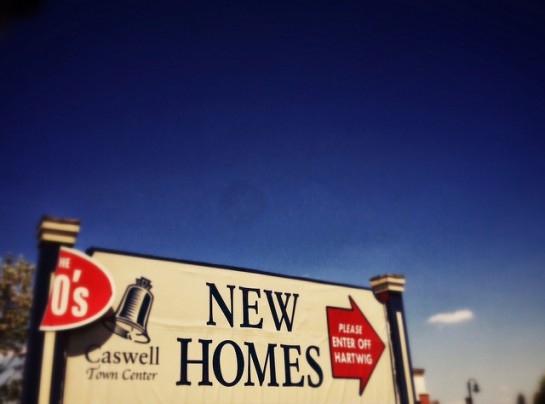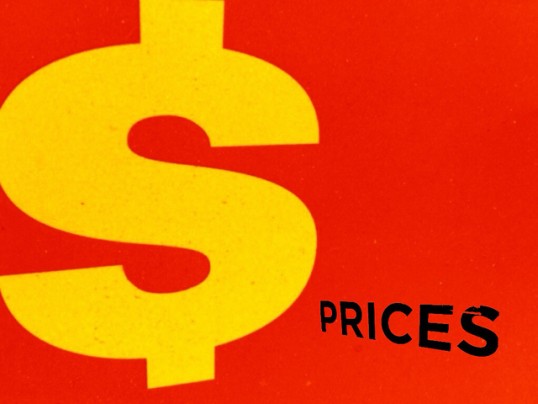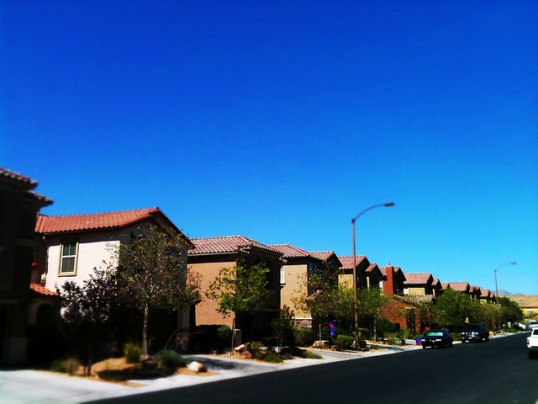The National Association of Home Builders Housing Market Index measures builder confidence in the market for newly built, single-family homes. Because builders have an insiders’ perspective on the market, the index has become an important measure of new home sales, buyer traffic, and expectations for future sales. In May, the index dropped a point, continuing a recent stretch in which builder confidence has remained relatively steady. Kevin Kelly, NAHB’s chairman, said builder sentiment has shown little fluctuation over the past four months and is becoming more in line with the reality of a continuing but modest recovery. Still, despite the fact that overall optimism has been hovering just below 50 – on a scale where any number above 50 indicates more builders view conditions as good than poor – the individual component measuring expectations for sales over the next six months rose to 57 in May. The component measuring buyer traffic also rose, climbing two points to 33. David Crowe, NAHB’s chief economist, said consumers will return to the market in larger numbers as job growth becomes more consistent. More here.
Archive for May 2014
Pent Up Demand, Young Buyers To Spur Sales
According to economists and industry experts gathered at a residential real estate forum organized by the National Association of Realtors, the housing market is trending upward, though there are a combination of factors that have been holding it back in recent months. Lawrence Yun, NAR’s chief economist, said rising home prices and mortgage rates, along with low inventory and tight credit, have slowed household formation despite a large pent-up demand built up over years of below-normal home sales. The slowdown was then made worse by severe winter weather earlier this year, which dampened first quarter sales across much of the country. Despite this, analysts expect sales to improve through the end of the year and into next. Those expectations are based on demographic data and recent polls showing a majority of Americans want to own their own home. And, with nearly three million more young adults living with their parents in 2012 than in 2007, it’s only a matter of time before that demand results in higher home sales. Eric Belsky, managing director of the Joint Center for Housing Studies at Harvard University, said – because household formation numbers are at least a million households below where they should be – there could be a notable uptick later this year. More here.
More Than Half Of U.S. Homes Affordable
During the first quarter of 2014, 65.5 percent of new and existing homes sold were affordable to a family earning the U.S. median income of $63,900, according to the National Association of Home Builders Opportunity Index. The improvement over the previous quarter was largely due to a dip in the national median home price and the fact that average mortgage rates remained steady during this period. But the slight increase in the number of affordable homes – up from 64.7 percent at the end of last year – is also an encouraging sign for the housing market going into the spring and summer season. David Crowe, NAHB’s chief economist, said the first-quarter results are another indicator that this is an opportune time to buy a home, as home prices and mortgage rates are expected to rise through the end of this year and into next. Also in the release, the national median home price fell from $205,000 in the fourth quarter of 2013 to $195,000 in the first quarter of this year. More here.
Mortgage Rates Fall To 6-Month Low
According to the Mortgage Bankers Association’s Weekly Applications Survey, the average contract interest rate for 30-year fixed-rate mortgages with conforming loan balances fell to its lowest level since November 2013 last week. Interest rates were down for FHA-backed loans and 15-year fixed-rate mortgages as well, while rates for jumbo loans remained unchanged from the week before. Falling mortgage rates led to an increase in refinance activity, with the Refinance Index increasing 7 percent from the previous week. The surge in refinance demand also brought the refinance share of total mortgage activity back up to 50 percent. The seasonally adjusted Purchase Index, on the other hand, fell 1 percent from the week before. The drop in mortgage rates marks the third consecutive week rates have fallen. The MBA’s survey has been conducted weekly since 1990 and covers 75 percent of all retail residential mortgage applications. More here.
Recovery Requires More Than Price Increases
Rising home prices are often seen as a sign that the housing market is healthy and doing well. But, according to Trulia’s latest Price and Rent Monitor, just because an area is experiencing sharp price increases doesn’t mean it’s fully recovered. For example, the five metropolitan areas that have seen the largest price gains over the past year, are all significantly below normal levels when looking at construction activity and building permits. On the other hand, metro areas that didn’t suffer large price declines during the recession – and, therefore, have had relatively small price increases since – are experiencing a residential construction boom. The takeaway, according to Trulia’s chief economist Jed Kolko, is that the housing recovery is going to require more than just increasing home values before it’s truly rebounded from the financial crisis. While the overall trend is positive, the particulars of each local market require a deeper look. Also in the report, home prices experienced their smallest year-over-year increase in 11 months, though they’re up 2.8 percent quarter-over-quarter. More here.
Housing Market Stabilizing After Long Winter
Each month, the U.S. Department of Housing and Urban Development and the U.S. Department of the Treasury collect key data on the housing market’s health and the results of the administration’s mortgage modification and foreclosure prevention efforts. In April, the government’s monthly Housing Scorecard found that, though home prices are still rising and foreclosures have hit their lowest level in many years, home sales slowed during the winter, with new home sales dropping to an eight-month low in March. Katherine O’Regan, HUD assistant secretary for policy development and research, said harsh winter weather, tight credit standards, and fewer distressed properties for sale combined to slow the pace of home sales. But, according to O’Regan, the housing market is stabilizing despite the rough winter months. As evidence, the scorecard highlights a 6.9 percent rise in home prices over last year, foreclosure completions at their lowest level since mid-2007, and stabilizing existing-home sales data. More here.
Market Booms Among Baby Boomer Buyers
The market for single-family homes among buyers 55 and older is booming, according to the most recent 55+ Housing Market Index from the National Association of Home Builders. During the first quarter of 2014, builder confidence in the market for new homes among older buyers reached its highest level ever after 10 consecutive quarters of year-over-year improvement. Steve Bomberger, chairman of NAHB’s 50+ Housing Council, said rising home prices and low mortgage rates are helping baby boomers sell their existing homes at a good price and purchase new homes more suited to their lifestyle. This trend, spurred by last year’s spike in home prices, is expected to lead to more homes being put up for sale this year, which will help slow the rate of price increases by building up the supply of homes available for purchase. Also in the report, the index’s individual components measuring current sales and expected sales both rose significantly from one year ago, while the gauge of prospective buyer traffic remained unchanged. More here.







